Counterfeits of Colombian currency can be more common than counterfeits of currency in many other countries. So, we recommend not exchanging money on the street in Colombia, as counterfeit currency can sometimes be experienced in Colombia.
In stores in Colombia you will see frequently see clerks verifying currency by looking at security features on notes. And I have seen clerks catch counterfeits at least 20 times in the past 10 years during my travels in Colombia and over eight years living in Medellín.
I have even received counterfeits five times in the past eight years. I luckily caught these twice and exchanged the fake 20,000-pesos notes I received for real bills. The two counterfeits I caught were both old 20,000-pesos notes. One I received at a bar in Cartagena and the other at a small shop in Medellín. These were fairly easy to identify as the notes didn’t have any texture and were obvious counterfeits.
Two counterfeits I didn’t catch were a counterfeit new 50,000-pesos note I believe I received from either an ATM machine or money exchange. I didn’t catch this until I returned home.
Another counterfeit I didn’t catch was a new 20,000-pesos note I received last week in change one day while out shopping at several small shops in Medellín. This was a better counterfeit that I didn’t find out about until I used it at an Exito the following day and the clerk identified it as a counterfeit.
The most common counterfeit currency in Colombia are reportedly the 20,000-pesos and 50,000-pesos notes plus the 100,000-pesos note. Also, the 1,000-pesos coin has been counterfeited.
We previously provided a guide to exchanging money, receiving and transferring money in Colombia. Some readers of Medellin Guru asked about counterfeits so we are now providing an up-to-date guide to Colombian currency and tips for avoiding counterfeits. Note in this article “bill” = “note” = “paper currency”.
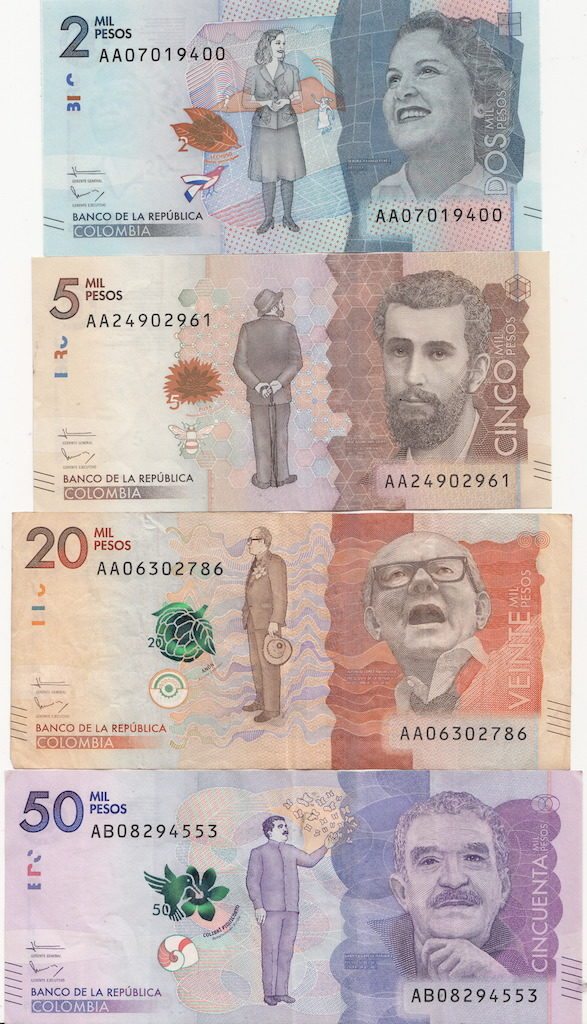
Four of the 2016 new Colombia currency notes
Colombia Currency
The currency system in Colombia uses the Colombian peso (COP). This comes in seven different paper currency denominations:
- 100,000-pesos note
- 50,000-pesos note (two versions)
- 20,000-pesos note (two versions)
- 10,000-pesos note (two versions)
- 5,000-pesos note (two versions)
- 2,000-pesos note (two versions)
- 1,000-pesos note
The 2,000-pesos; 5,000-pesos; 10,000-pesos; 20,000-pesos and 50,000-pesos notes each have two different versions in circulation. There is a new series of notes that were introduced in 2016 for everything but the 1,000-pesos note. So, there are 12 different currency notes currently in circulation in Colombia.
The newest currency notes in Colombia don’t spell out the full amount such as the new 20,000-pesos note that says “20 MIL PESOS”.
In addition, Colombia uses five different coins: 1,000-pesos, 500-pesos, 200-pesos, 100-pesos and 50-pesos. And there are two versions of these coins currently in circulation. Supposedly there are also 20-pesos, 10-pesos and 5-pesos coins but I have never seen them.
Photos of all the Colombian currency notes and coins in circulation in Colombia are found on the official Banco de la República website.
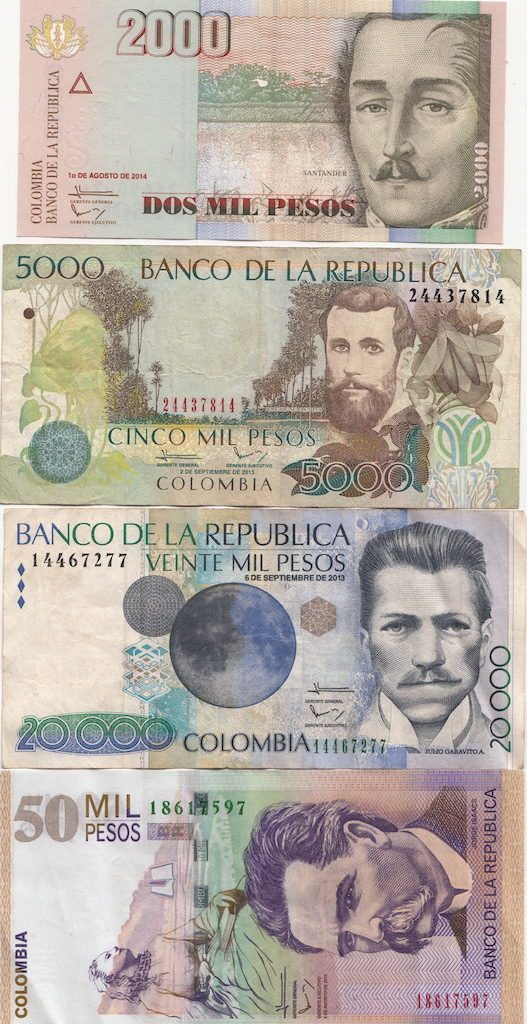
Four of the old Colombia currency notes still in circulation
Proposal to Cut 3 Zeros from Colombia’s Currency System
There is a proposal out there to cut three zeros from Colombia’s currency system. Some of the rational is that it would make currency conversions and accounting easier. A 10,000-peso taxi ride would become a 10-peso taxi ride under this proposal.
But a government proposal to rebase the Colombian currency with fewer zeros failed several years ago. It failed due to concerns that the expenses to print new bills, change accounting systems and switch prices everywhere would outweigh the benefits.
But the newest currency notes in Colombia no longer have the final three zeros and say MIL instead. So, they look to possibly be preparing for rebasing the currency.
Counterfeit Currency in Colombia
The counterfeit problem is fairly widespread in Colombia. In a quick two-day survey in November 2017, the El Colombiano newspaper found that 61 percent of 1,250 people it surveyed had been affected by counterfeits.
The same article indicates that counterfeit currency can even get into ATM machines in Colombia. Banco de Bogotá, Bancolombia, Banco Popular and AV Villas had the most concerns from users regarding counterfeits.
Cali is reportedly considered the capital of counterfeiting in Colombia. From 2003 to April 2017, 65 operations were reportedly carried out by police in Cali to dismantle counterfeiting operations. Over the same period, 32 counterfeiting operations were shut down in Medellín and 31 in Bogotá.
Cali reportedly was the first city in Colombia that started counterfeiting in the 1970s with a specialty in counterfeiting U.S. dollars. So, even watch out for counterfeit U.S. dollars received in Colombia.
Several years ago, fake U.S. dollars from Cali were considered the best but now the best are considered from Peru. An estimated 60 percent of counterfeit U.S. bills reportedly now come from Peru.
Even coins in Colombia can be counterfeit. The police in the past shut down a factory in Bogotá that was producing counterfeit 1,000-pesos coins.
Tips for Avoiding Counterfeit Currency in Colombia
It’s possible to receive counterfeits anywhere in Colombia, even from ATM machines. But you are more likely to encounter counterfeits in small tiendas (shops), bars and from taxi drivers than in banks and larger stores.
Our biggest tip is that it’s important to educate yourself on how to identify legitimate currency notes for the most commonly counterfeited notes – the 20,000-pesos; 50,000-pesos and 100,000-pesos notes.
One way to tell is by the feel. Genuine currency notes in Colombia have some texture to them and many counterfeits don’t have this texture.
Also, all the Colombia currency notes have security features. Here are some ways to identify genuine currency notes by some of the security features:
20,000-pesos – old notes:
If you look at the hexagon on the front of the note at angles, it changes color from gold to green. On the two counterfeits I received this hexagon didn’t change colors. And here’s a document (in Spanish) with more security features of the old 20,000-pesos note.
20,000-pesos – new 2016 notes:
On the front there is an Anón fruit that changes from green to blue when viewed at different angles. Also, on the back, there is a security strip that changes color from green to violet when viewed at an angle.
And the following is a video (in Spanish) from the Banco de la República with descriptions of all the security features of the new 20,000-peso note:
50,000-pesos – old notes:
If you look at the large 50 on the front, it changes color from gold to green when viewed at different angles. On the counterfeit I received the large 50 didn’t change color. And here’s a document (in Spanish) with more security features of the old 50,000-pesos note.
50,000-pesos – new 2016 notes:
On the front there is bird that changes from green to blue when viewed at different angles. Also, on the back, there is a security strip that changes color from copper to green when viewed at an angle.
And the following is a video (in Spanish) from the Banco de la República with descriptions of all the security features of the new 50,000-peso note:
100,000-pesos – new 2016 notes:
On the front, there is a flower that changes color from green to blue when viewed at an angle. Also, on the back, there is a security strip that changes color from fuchsia (purplish red) to green when viewed at an angle.
And the following is a video (in Spanish) from the Banco de la República with all the security features of the 100,000-peso note:
The new currency notes introduced in Colombia in 2016 have many more security features than the old currency notes. You can see the security features of all the currency notes in circulation in Colombia on the Banco de la República website.

Family of Colombian currency notes Issued in 2016
The Bottom Line: Colombia Currency and Avoiding Counterfeits
Be careful of the Colombia currency notes you receive as counterfeits can occasionally be found in Colombia, as I have experienced. And I have met several other foreigners who have also experienced counterfeits.
The bottom line is that all the currency notes in circulation in Colombia have a number of security features. These security features make the currency more difficult to counterfeit. So, if you learn about these security features you’ll be able to better identify genuine currency and avoid counterfeits.
Sign up for the Free Medellin Guru Newsletter – You can see all of the previous Medellin Guru weekly email newsletters and sign up here.
Editors note: updated on September 14, 2021 with information about additions counterfeits encountered.



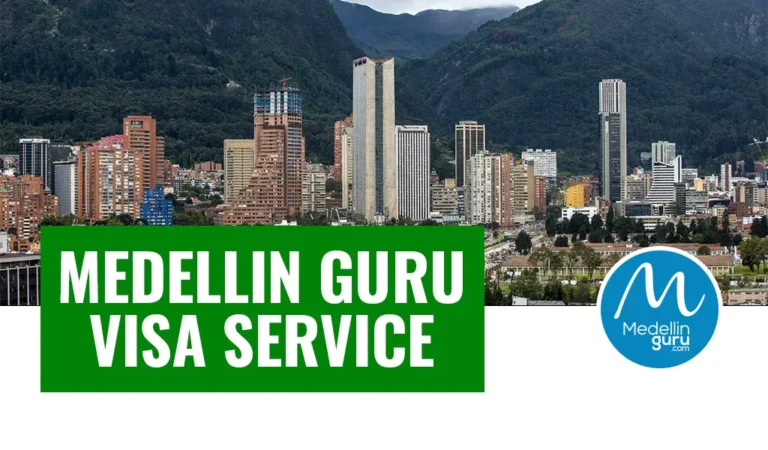
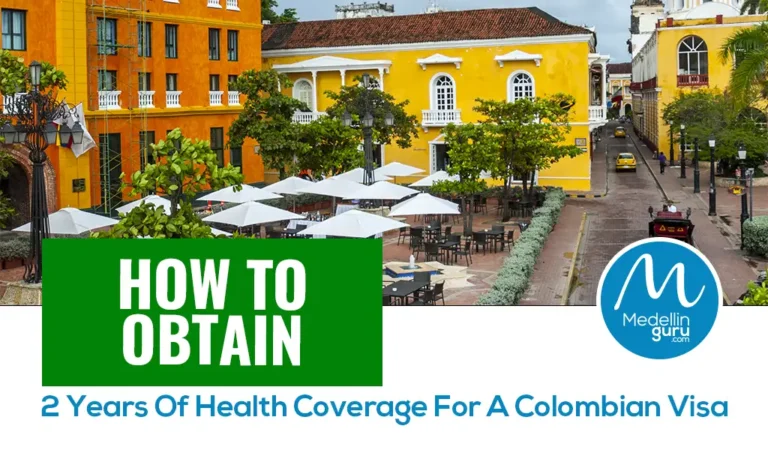



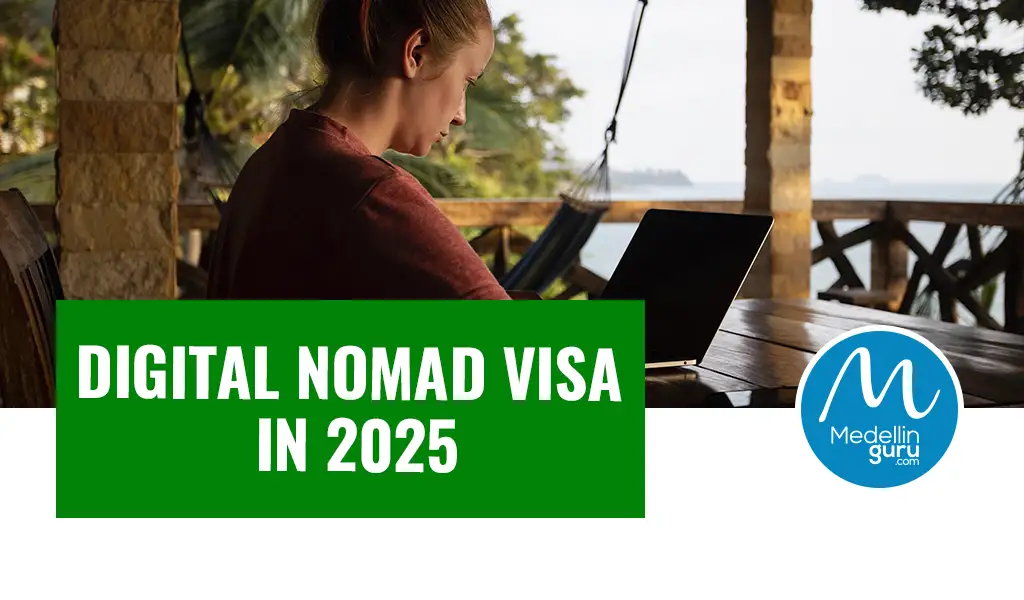
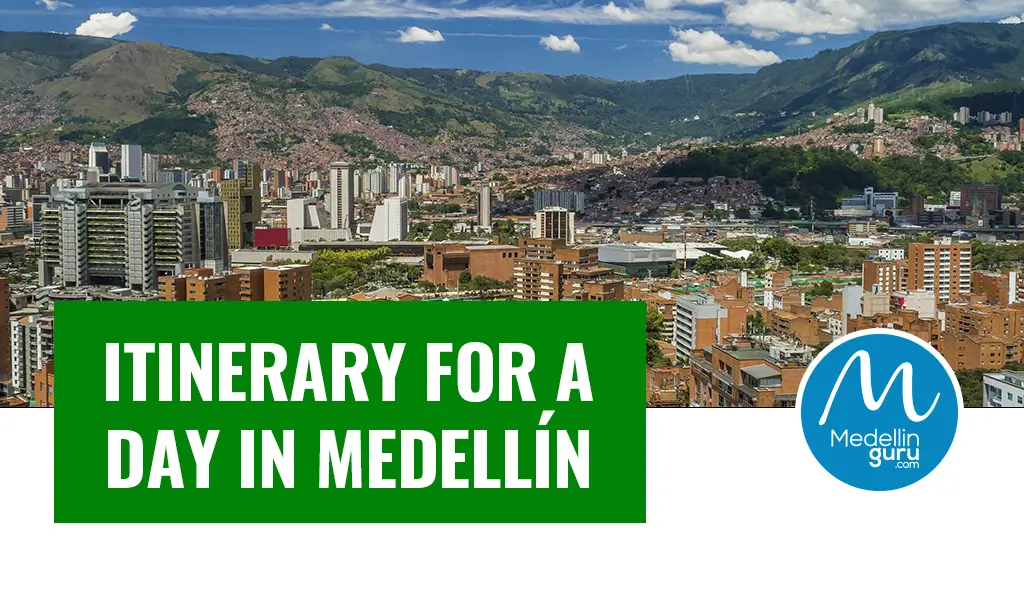
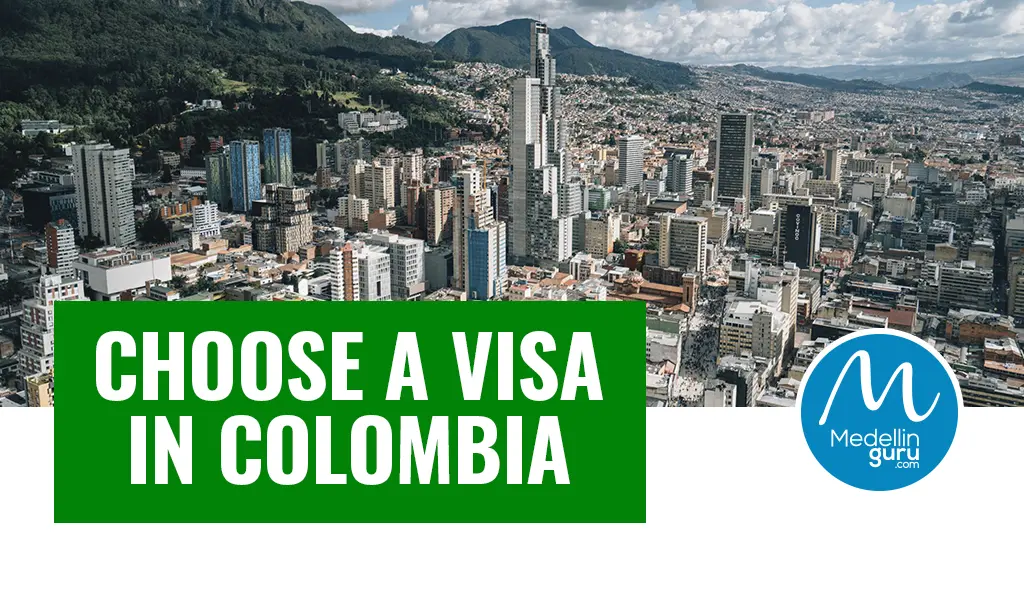
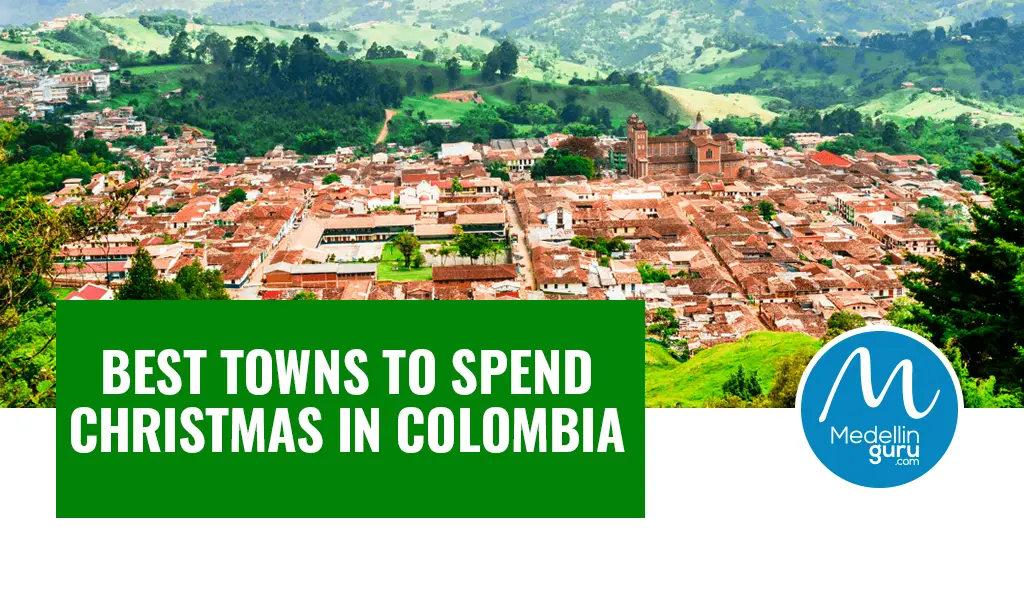
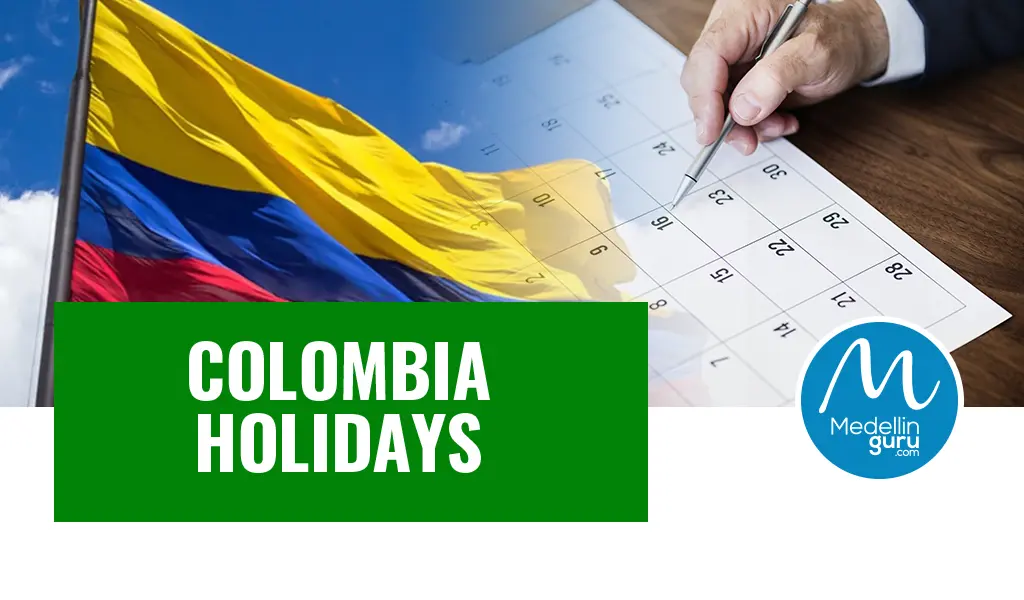
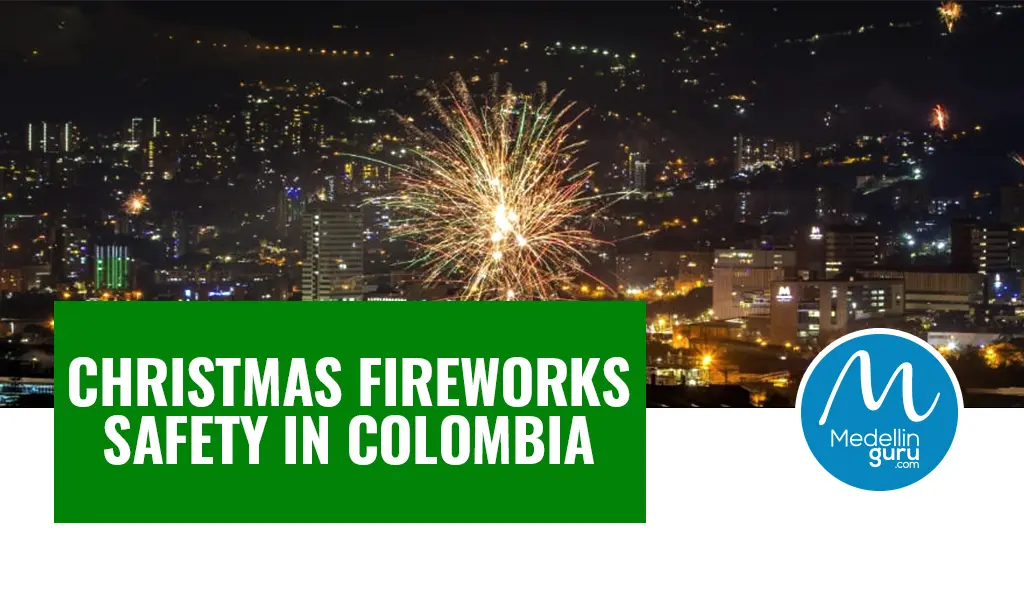


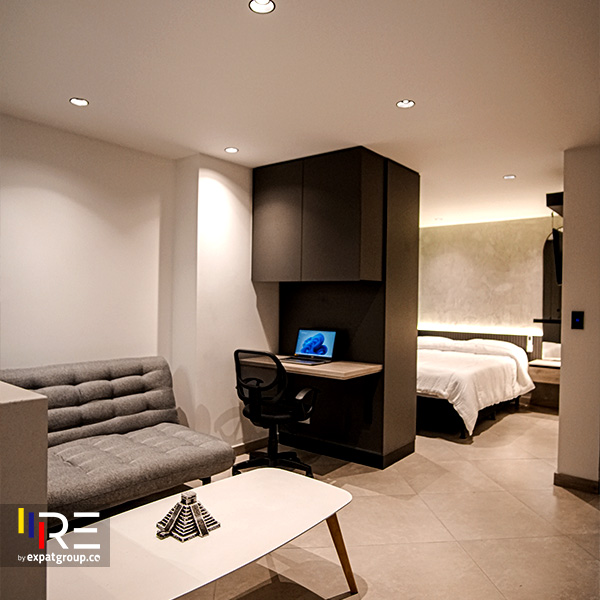



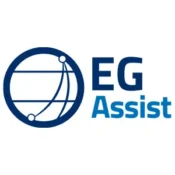




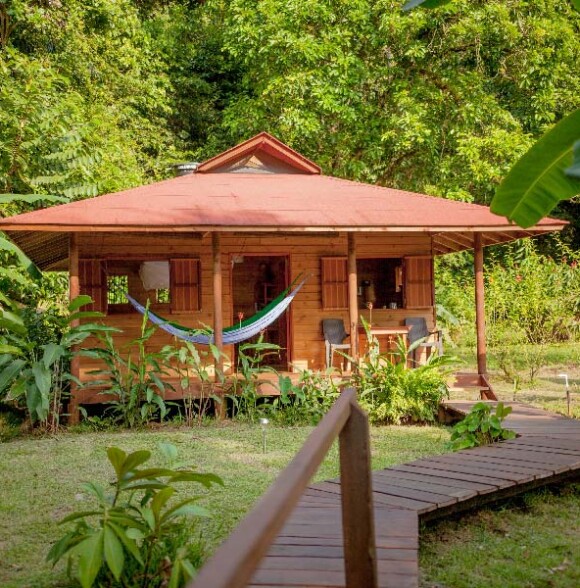
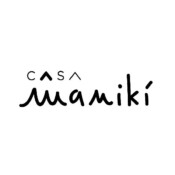
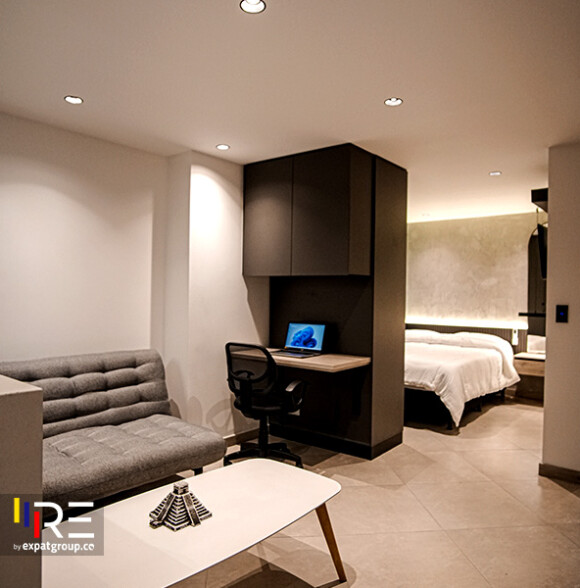





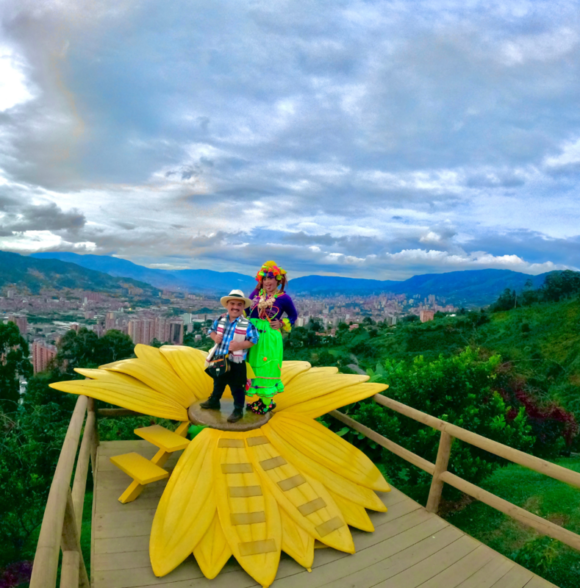


13 thoughts on “Guide to Colombia Currency and Avoiding Counterfeits”
Great report. What bank do you use and which bank ATM will allow the largest withdrawal?
Thank you.
Hi John, thanks. I use Colpatria in Colombia as they offer decent interest rates and have short lines and online banking.. The bank ATMs that I understand permit the biggest withdrawals are Citibank ATMs but Citibank in Colombia is in the process of being bought by Colpatria. Some expats have said they were able to withdraw 2 million pesos from Citibank ATMs. Many other bank ATMs are limited to 600,000 pesos or even 400,000 pesos in popular spots.
Good article, We were scammed by a “taxi” driver, I handed the money for the tour over the front seat to him and he immediately cried counterfeit 50 mil, he could not have had time to check them. I believe he had a counterfeit one ready, so we gave him another real one for the fake, lesson learned, always watch when handing money over. This was in Bogota, several years ago. Funny footnote, when we told the landlord about it, we asked if we should report it to the police, he just laughed and said “he was probably an off duty police man” Took us a while to get rid of it, buried among a bunch of other notes and left it to cover our meal.
Good research, Jeff. Since this is only my second trip to Colombia, it is a mystery on the use of ‘Mil” (million) pesos when it is really “K” for Kilo = thousand pesos. Can you or someone enlighten me?
Hi Don, “mil” is thousand in Spanish. Look it up in any Spanish-English dictionary.
Well, it never occurred to me to look at a Spanish dictionary and, you are correct. I mistakenly linked Kilo to one thousand of anything ,not just weight — one kilo = 1000 grams.
Thanks for your patience
Thanks for the heads up Jeff, didn’t realize that this was such a problem in Colombia. Doesn’t seem like a huge problem, but will keep and eye out when I get there.
Hi Brock, yes not a huge problem. But since several readers asked about counterfeits and I have experienced some counterfeits, I thought worthwhile to write and up-to-date article.
Nice job Jeff. much appreciated.
Thanks, I haven’t received a counterfeit but my Colombian girlfriend thinks received a counterfeit 20,000 pesos bill in change a couple days ago when she was out shopping. And when she tried to use it to pay for lunch she found out it was counterfeit from the waitress. I have never seen one of the 100,000 pesos bills yet, are they used much?
Hi Dan, I have only seen a few of the 100,000-pesos notes. And many small stores and taxis won’t have change for one. So, they aren’t used very much. According to the Banco de la República stats there are only about 10 million 100,000-pesos notes in circulation compared to about 1.1 billion 50,000-pesos notes in circulation.
What to do if you receive a counterfeit bill?
Can it be exchanged for real or do you lose out?
Hi Todd, if you discover it’s a counterfeit when you receive it you can exchange it as I did at a shop in Medellín and a bar in Cartagena when they gave me counterfeits in change. Otherwise you lose out. You can’t exchange counterfeits for real currency or everyone would be out there making counterfeits.